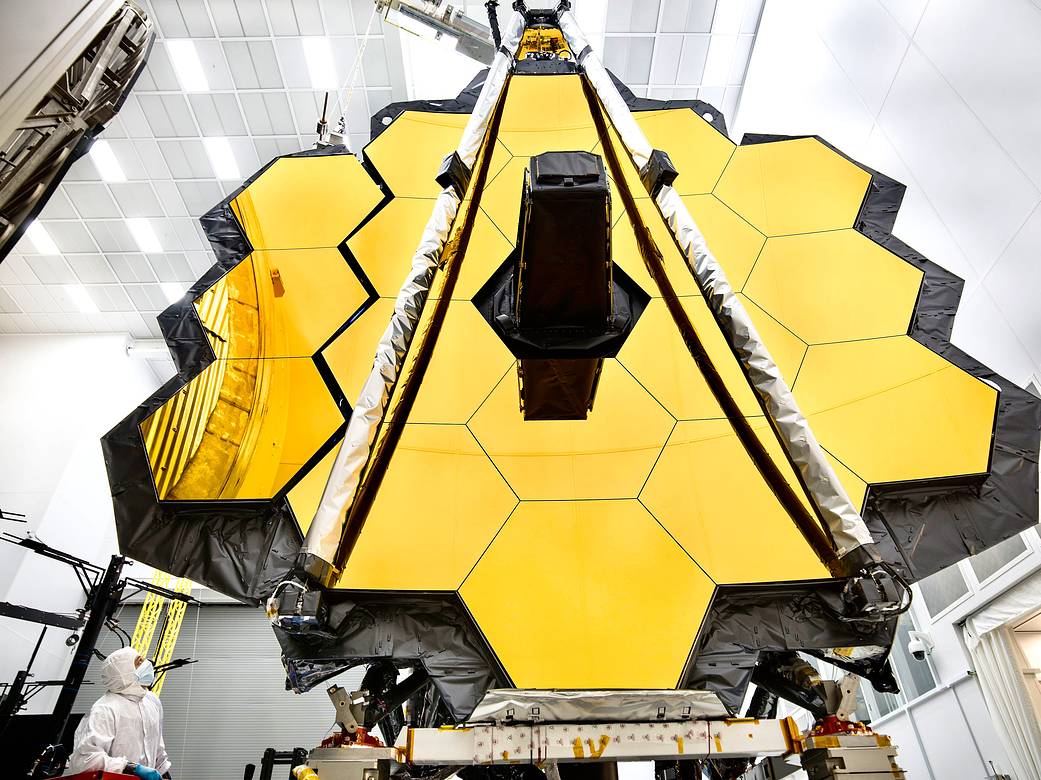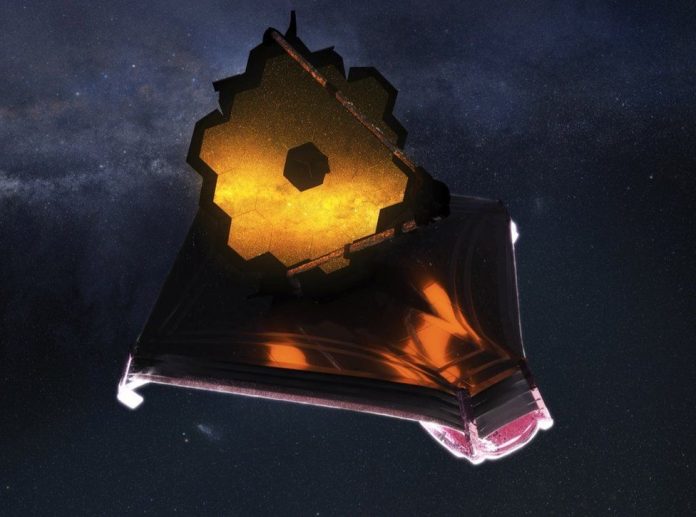After one month of travelling, the James Webb Space Telescope (JWST) has arrived at its new home – nearly ready to start collecting data on the universe
The telescope has been stationed at what is known as a Lagrange point (L2), a gravitationally stable spot in space where all forces on the spacecraft are balances enabling it to stay in place, orbiting the sun along with the earth.
Now that JWST has reached its parking spot, it will take about a week for everything to cool down before the telescope’s engineers can begin the final necessary steps before observations can begin.
Stationed around 1.5 million kilometres from the planet in the direction opposite to the sun, the telescope will be saving fuel by being stationed at L2 whilst also observing the sky without the light or heat from the sun, earth, or moon interfering. The James Webb telescope will face away from all these objects with its massive sunshield blocking out their light to protect the sensitive readings and observations being collected.

©NASA/Chris Gunn
The innovation of the sunshield and primary mirror
In order to function the JWST requires extreme cold temperatures, this is where the sunshield reveals its invaluable function.
While the sun-facing side of the shield will be at a temperature of about 85°C, the other side will be kept at about -233°C, nearly as cold as the average temperature in deep space. Currently scientists are waiting for the JWST to cool down before they can begin the intricate task of aligning the telescopes primary mirror.
The JWST has 18 hexagonal segments that make up the telescopes primary mirror have to be aligned with incredible precision, according to a member of the team the mirrors but be lined up within one five-thousandth the width of a human hair which is expected to take up to three months.
“Everything we’re doing is about getting the observatory ready to do transformative science,” said JWST scientist Jane Rigby, also at NASA Goddard, in the media press teleconference. “We’re a month in, and the baby hasn’t even opened its eyes yet.”
If all goes well, the science mission will begin around the end of June.
The future for the James Webb Telescope
According to NASA, Webb’s mission focuses on four main areas: first light in the universe, assembly of galaxies in the early universe, birth of stars and protoplanetary systems and planets (including the origins of life.)
Webb’s initial lifespan (based on fuel consumption calculations) was estimated at 10 years, and while precise measurements are ongoing, the team says the telescope has enough fuel now to operate for about 20 years. With spirits high scientists seem eager to start collecting data have also been considering the idea of a deep space refuelling mission in a few decades to keep the telescope running.
James Webb Space Telescope is seven times more powerful that the Hubble telescope build 30 years ago and can see two to three times closer to the big bang.
The telescope has been designed to collected infrared light from galaxies that existed 13.8 billion years ago, a few hundred years after the big bang – allowing scientists to see through time.











